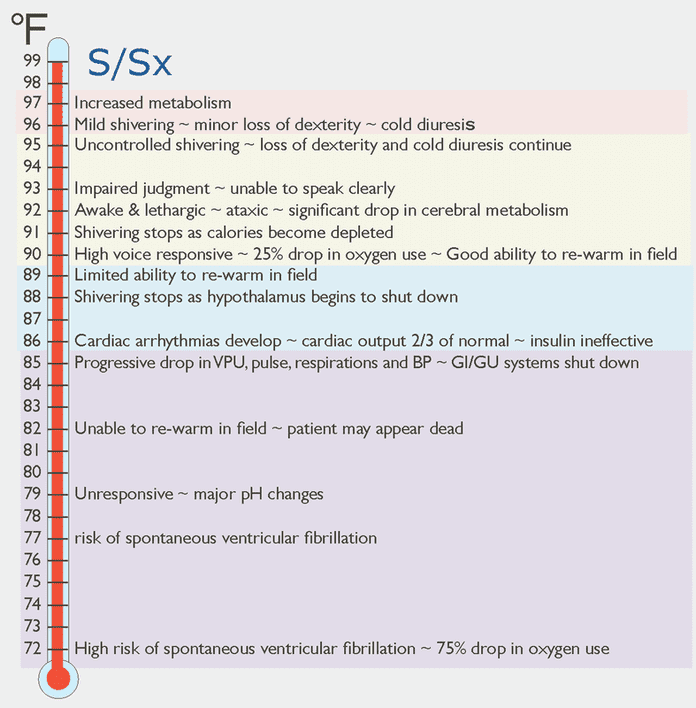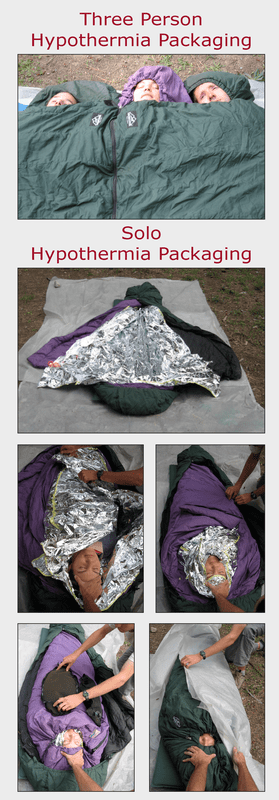Thermoregulation & Cold PhysiologyHypothermia occurs when a person cannot maintain their normal body temperature in the face of a cold challenge. The cold challenge increases as a person is exposed to progressively decreasing temperature, increasing humidity, and increasing wind. People respond to a cold challenge by increasing their heat production through shivering and maintaining their core temperature through peripheral vasoconstriction. Heat production requires an efficient metabolism and accessible calories. The ability to produce heat via shivering or exercise drops as their available calories become depleted. Fitness, hydration, health, and injury all affect a person’s metabolism and their ability to produce heat. The onset of hypothermia is variable and depends on the severity of the cold challenge, the length of exposure, and the health of the patient. Acute hypothermia may occur in minutes to hours with cold water immersion regardless of the victim’s health. Subacute hypothermia may occur in hours to days in a mountain or river environment where decreased calories predispose the climber, hiker, or paddler to hypothermia from a moderate cold challenge. Expedition members with predisposing factors (poor health, inadequate nutrition, poor hydration, etc.) can develop a chronic cold response during prolonged exposure (days to weeks) to cool environmental conditions due to limited caloric intake and no glycogen or fat stores. They may easily become hypothermic when presented with a slight increase in the cold challenge. Notes:
Cold Response Treatment Shelter, Insulation & Heat
Mild Hypothermia Treatment General
Moderate Hypothermia Treatment General
0 Comments
Your comment will be posted after it is approved.
Leave a Reply. |
Categories
All
Our public YouTube channel has educational and reference videos for many of the skills taught during our courses. Check it out!
|


 RSS Feed
RSS Feed
